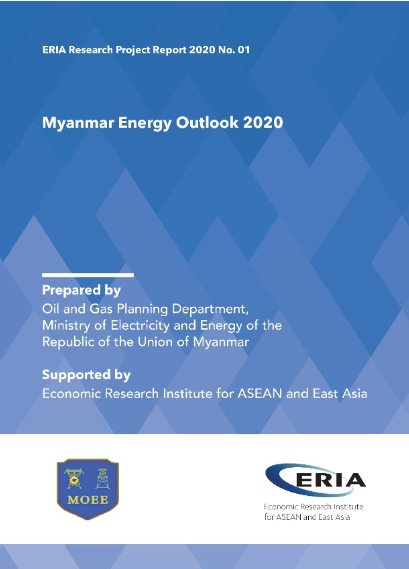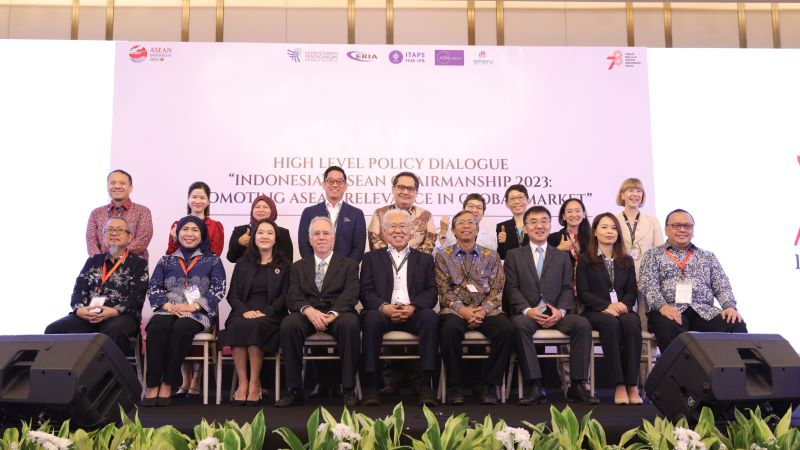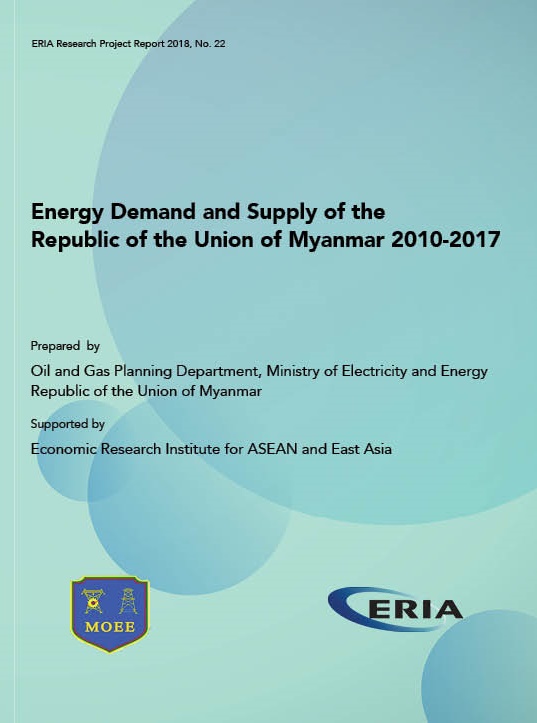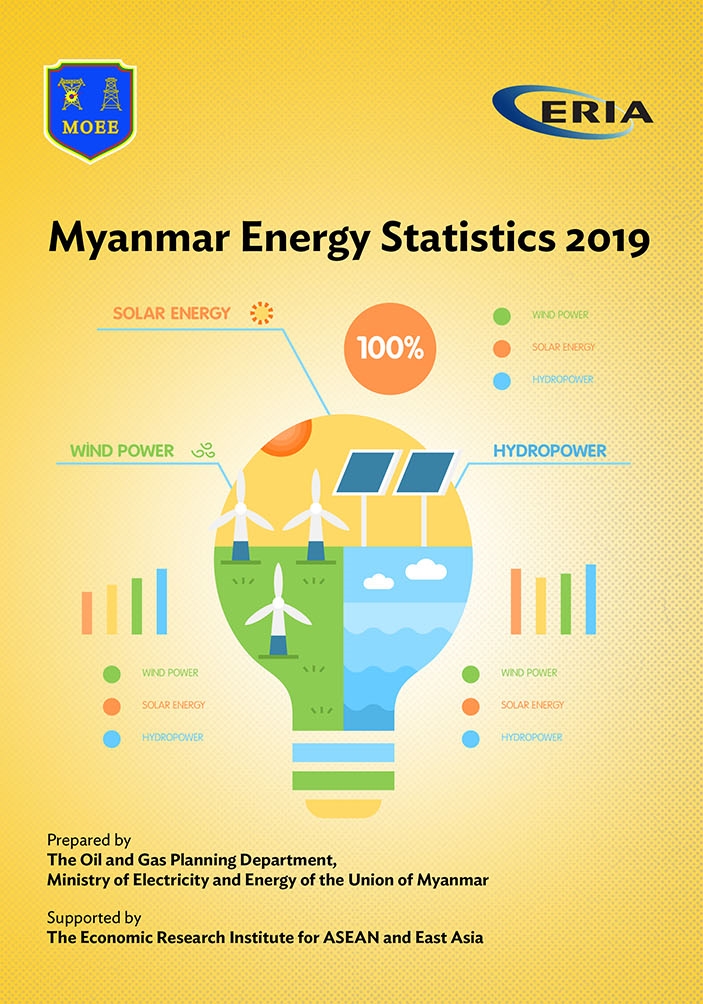Myanmar Energy Outlook 2020

Print Article:
The Myanmar Energy Outlook 2020 (ERIA, 2020) provides a useful tool for the analysis of the historical energy demand and supply situation of Myanmar. To help Myanmar analyse the future energy demand and supply situation, the Economic Research Institute for ASEAN and East Asia (ERIA) has continued to support the Oil and Gas Planning Department (OGPD), Ministry of Electricity and Energy (MOEE) to produce the Myanmar Energy Outlook 2040 based on the Myanmar Energy Statistics 2019. ERIA has provided training on an econometrics approach to OGPD, MOEE staff members.
This approach consists of two parts: (i) estimation of energy demand formulas applying the ordinary least squares method using Myanmar Energy Statistics 2019, and (ii) development of future simulation models that forecast energy balance tables up to 2040 under several macro assumptions such as growth rates of gross domestic product (GDP) and population.
Myanmar’s total final energy consumption (TFEC) (by industry, transport, commercial buildings, and residences) will increase by 3.0% per year by 2040. Oil will increase by 4.9% per year and electricity by 7.0% by 2040.
Total primary energy supply (TPES) will increase by 3.5% per year by 2040. The main imported fuel is oil, but by 2040 all fossil fuels will depend on imports because domestic production will decline. As a result, current import dependency (14% in 2016) is forecast to increase to 49%. As Myanmar’s energy supply security will be vulnerable, the following policies are recommended: (i) prioritisation of an energy efficiency and conservation policy, especially to mitigate electricity consumption mainly in commercial buildings; (ii) focusing on shifting from natural gas power generation to coal, using domestic coal and applying clean coal technology; (iii) promoting an increase in the use of biomass especially in rural areas with an efficient biomass cooking stove; and (iv), pushing the use of hydropower (especially during the rainy season) and solar/PV power (in the dry season), which can complement each other.
Full Report
Contents
Chapter 4. Estimation of Energy Demand Formulas
Chapter 6. Assessment of Future Simulation Results




